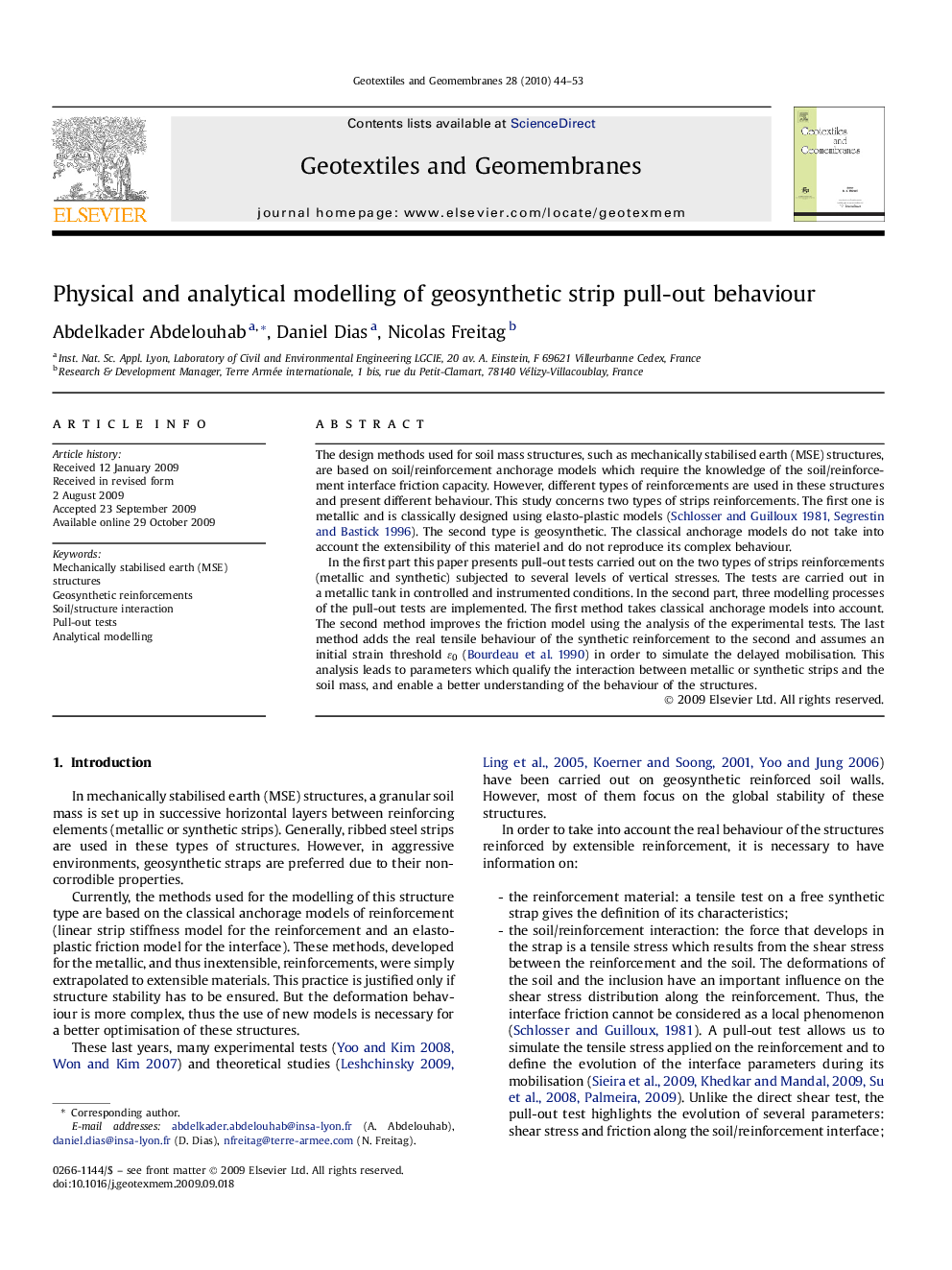| Article ID | Journal | Published Year | Pages | File Type |
|---|---|---|---|---|
| 274391 | Geotextiles and Geomembranes | 2010 | 10 Pages |
The design methods used for soil mass structures, such as mechanically stabilised earth (MSE) structures, are based on soil/reinforcement anchorage models which require the knowledge of the soil/reinforcement interface friction capacity. However, different types of reinforcements are used in these structures and present different behaviour. This study concerns two types of strips reinforcements. The first one is metallic and is classically designed using elasto-plastic models (Schlosser and Guilloux, 1981 and Segrestin and Bastick, 1996). The second type is geosynthetic. The classical anchorage models do not take into account the extensibility of this materiel and do not reproduce its complex behaviour.In the first part this paper presents pull-out tests carried out on the two types of strips reinforcements (metallic and synthetic) subjected to several levels of vertical stresses. The tests are carried out in a metallic tank in controlled and instrumented conditions. In the second part, three modelling processes of the pull-out tests are implemented. The first method takes classical anchorage models into account. The second method improves the friction model using the analysis of the experimental tests. The last method adds the real tensile behaviour of the synthetic reinforcement to the second and assumes an initial strain threshold ɛ0 (Bourdeau et al. 1990) in order to simulate the delayed mobilisation. This analysis leads to parameters which qualify the interaction between metallic or synthetic strips and the soil mass, and enable a better understanding of the behaviour of the structures.
